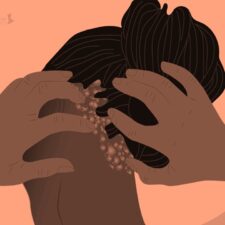 Experiencing a traumatic event isn’t rare. In fact, about 10 out of every 100 women develop post-traumatic stress disorder (PTSD) sometime in their lives, compared with 4 of every 100 men, reports the National Center for PTSD. Even more alarming, 5 million children are exposed to a traumatic event in the United States every year, amounting to 1.8 million new cases of PTSD.
Experiencing a traumatic event isn’t rare. In fact, about 10 out of every 100 women develop post-traumatic stress disorder (PTSD) sometime in their lives, compared with 4 of every 100 men, reports the National Center for PTSD. Even more alarming, 5 million children are exposed to a traumatic event in the United States every year, amounting to 1.8 million new cases of PTSD.
Of course, this is only a small portion of those who have gone through an individual traumatic event like a car accident, child birth, sexual assault, domestic violence (or witnessed violence), war, or a natural disaster, among other things.
Although it’s true, many factors can contribute to the overall risk and symptom severity associated with PTSD. Research shows that persons with certain pre-existing abnormalities in the brain's stress-response system may be predisposed to develop a mental illness when triggered by a shocking occurrence.
All the more diverse – the symptoms one suffering from PTSD may face:
- Night tremors
- Outbursts of anger
- Intense distress if exposed to anything resembling the event
- Distorted beliefs about the world or oneself
- Detached emotions
- Loss of interest in hobbies and relationships
- Chronic pain, headaches, or irritable bowels
- In young children: agitated behavior, difficulty concentrating, or developmental regression in such things as toilet training or speech
- No sense of a future -- family, career, or old age.
Naturally, in order to treat such a plethora of side effects, treatment may include different types of psychotherapy as well as medications including:
Cognitive behavioral therapy (CBT)
Is goal-oriented psychotherapy treatment which applies a hands-on, practical approach to problem-solving with the hopes of changing behavioral and thinking patterns behind an individual’s difficulties -- in order to change the way one feels.
Virtual reality treatment
Also known as VR, virtual reality treatment is largely used for exposure therapy, gradually subjecting people to the situation that triggers their anxiety or PTSD.
Selective serotonin reuptake inhibitor (SSRI)
SSRIs are the most commonly prescribed antidepressant. They help ease depression symptoms my increasing serotonin in the brain.
Yoga
According to a study that ran from 2008 through 2011, 64 women with chronic, treatment-resistant PTSD were randomly assigned to either yoga or supportive women's health education. For 10 weeks, participants in each group attended a 1-hour class at least once in a seven-day period. At the end of the study, researchers found that “16 of 31 participants (52%) in the yoga group no longer met the criteria for PTSD, compared to 6 of 29 (21%) in the control group,” says the National Center for Biotechnology Information.
In other words, yoga significantly reduced PTSD symptoms, in comparison to well-researched psychotherapeutic and psychopharmacologic approaches – citing that the practice of physical and mental disciplines aided participants in discovering tools to combat physical and sensory experiences associated with fear and helplessness as well as increase emotional awareness and tolerance.
While there is still much to learn about the popular treatment, one thing’s for sure – it appears to be promising.








